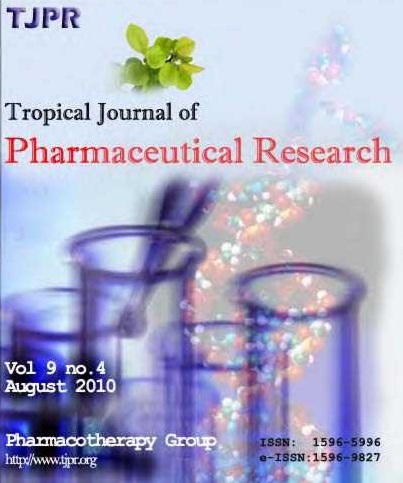Preliminary study on the relationship between recurrence and quasispecies characteristics in P region of hepatitis B virus genome of chronic hepatitis B patients treated with lamivudine
IF 0.6
4区 医学
Q4 PHARMACOLOGY & PHARMACY
引用次数: 0
Abstract
Purpose: To investigate the characteristics of quasispecies in the P region of hepatitis B viral (HBV) DNA of chronic hepatitis B (CHB) patients treated with lamivudine (LAM), and its effect on HBV relapse after drug withdrawal in CHB patients who met drug cessation criteria. Methods: A total of 43 patients with chronic HBV infection, who had undergone LAM therapy, were enrolled in this study. Treatment was discontinued for patients who met therapeutic criteria set by relevant Asian-Pacific regions. Polymerase chain reaction (PCR) was used to amplify the genome in P region of serum rcDNA before treatment, cccDNA during drug cessation period, and serum rcDNA at relapse. Quasispecies cloning and sequencing were performed to identify variable sites in HBV P region. Results: Mutations in P region of baseline serum rcDNA were detected in 30 CHB patients, with N/H238T (14/30), L/F/Q/R267H (12/30), V278T (12/30), D134E/I (11/30), and T222A (9/30) having highest rates. In hepatocellular cccDNA P region during drug withdrawal, most detectable mutations were L/F/Q/R267H (25/43), V278T (18/43), N/H238T (15/43), D134E/I (14/43), and T222A (11/43). During relapse, the highest detectable mutation rates in serum rcDNA P region were N/H238T (12/19), L/F/Q/R267H (10/19), T222A (10/19), and V278T (8/19). Conclusion: High mutation rates of T222A and N/H238T in P region of HBV DNA increase the risk of relapse in patients. As a result, patients are susceptible to relapse after drug withdrawal.拉米夫定治疗慢性乙型肝炎患者乙肝病毒基因组P区准种特征与复发关系的初步研究
目的:探讨拉米夫定(LAM)治疗慢性乙型肝炎(CHB)患者乙型肝炎病毒(HBV) DNA P区准种特征及其对符合停药标准的CHB患者停药后HBV复发的影响。方法:选取43例接受LAM治疗的慢性HBV感染患者为研究对象。符合相关亚太地区制定的治疗标准的患者停止治疗。采用聚合酶链反应(PCR)扩增治疗前、停药期和复发期血清rcDNA P区基因组。准种克隆和测序鉴定HBV P区可变位点。
结果:30例CHB患者均检测到基线血清rcDNA P区突变,其中N/H238T(14/30)、L/F/Q/R267H(12/30)、V278T(12/30)、D134E/I(11/30)、T222A(9/30)发生率最高。停药期间肝细胞cccDNA P区检测到最多的突变为L/F/Q/R267H(25/43)、V278T(18/43)、N/H238T(15/43)、D134E/I(14/43)和T222A(11/43)。在复发期间,血清rcDNA P区可检出的突变率最高的是N/H238T(12/19)、L/F/Q/R267H(10/19)、T222A(10/19)和V278T(8/19)。结论:HBV DNA P区T222A和N/H238T的高突变率增加了患者复发的风险。因此,患者停药后容易复发。
本文章由计算机程序翻译,如有差异,请以英文原文为准。
求助全文
约1分钟内获得全文
求助全文
来源期刊
CiteScore
1.00
自引率
33.30%
发文量
490
审稿时长
4-8 weeks
期刊介绍:
We seek to encourage pharmaceutical and allied research of tropical and international relevance and to foster multidisciplinary research and collaboration among scientists, the pharmaceutical industry and the healthcare professionals.
We publish articles in pharmaceutical sciences and related disciplines (including biotechnology, cell and molecular biology, drug utilization including adverse drug events, medical and other life sciences, and related engineering fields). Although primarily devoted to original research papers, we welcome reviews on current topics of special interest and relevance.

 求助内容:
求助内容: 应助结果提醒方式:
应助结果提醒方式:


